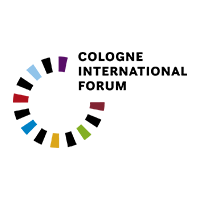"These findings are like a roadmap guiding us toward creating better electronic gadgets using our special films."
Thin Films of Aziridinium-Based Hybrid Perovskites: From Fundamental Understanding Towards Optoelectronic Applications
We spoke to Dr. Olesia Kucheriv who is a junior research associate at Taras Shevchenko National University of Kyiv, Ukraine and who leads a collaborative effort focusing on novel hybrid organic-inorganic perovskite materials. With international research experience in Romania, Poland, and France, she brings valuable expertise to this collaborative project, aimed at advancing understanding and applications of hybrid perovskites.
Cologne International Forum:
Welcome Dr. Kucheriv! We are very happy to have you here to provide us with a status update on your project. Could you share an update on the current progress of the project, particularly regarding milestones or objectives achieved?
Olesia Kucheriv:
We have successfully accomplished all primary project objectives, having conducted principal laboratory experiments. Our current focus is on the preparation of the manuscript.
Could you provide any significant discoveries or advancements that have occurred since our previous update?
Yes, we've made a significant breakthrough by developing a method to produce thin films of aziridinium lead halide perovskite for the first time.
What Are Perovskites? (Video on YouTube)
Are there any challenges or obstacles that have arisen during the project?
The most challenging aspect of the project was figuring out how to create thin films based on aziridinium. Aziridine, the main component, is highly reactive and tends to change its structure when in solution. However, when incorporated into a perovskite structure, aziridinium becomes stable within the framework of a 3D lead halide structure, resulting in a material that remains stable in a solid state. Unfortunately, the reactivity of aziridine made it difficult to use the typical solution-based methods used for making similar films with other compounds like methylammonium or formamidinium perovskites.
Despite this hurdle, through a series of tests, a combination of solvents and anti-solvents was identified that allowed for the production of aziridinium perovskite thin films using spin coating. The chemical composition and purity of the resulting materials were confirmed through various physical and chemical tests.
What key data or experimental results have been obtained recently that are shaping the project's direction?
Recently, we thoroughly examined the thin films we've developed. We gathered detailed information about how they look and behave, in terms of their surface, optical properties and their electronic structure. This data is essential because it helps us understand how to design devices like solar panels using these materials. In simpler terms, these findings are like a roadmap guiding us toward creating better electronic gadgets using our special films.
"This collaborative effort was instrumental in the project's success by pooling together diverse skills and resources towards a common goal."
Can you give us insights into the collaborative aspect of the project and how it contributed to the overall success?
Absolutely! The Innovative Tandem Collaborations project brought together two teams with different expertise: one from Kyiv focusing on material synthesis and fabrication, and another from Cologne specializing in physical characterizations and device fabrication. This collaboration was crucial because it allowed researchers from Ukraine to access equipment and resources not available in their own lab. Plus, early-stage researcher Hanna Pertosova got to learn first-hand about operating high-tech equipment during her time in Cologne. The project also led to significant achievements, such as presenting research on aziridinium hybrid perovskites at the Materials for Sustainable Development Conference in Malaga, 2023. Overall, this collaborative effort was instrumental in the project's success by pooling together diverse skills and resources towards a common goal.
